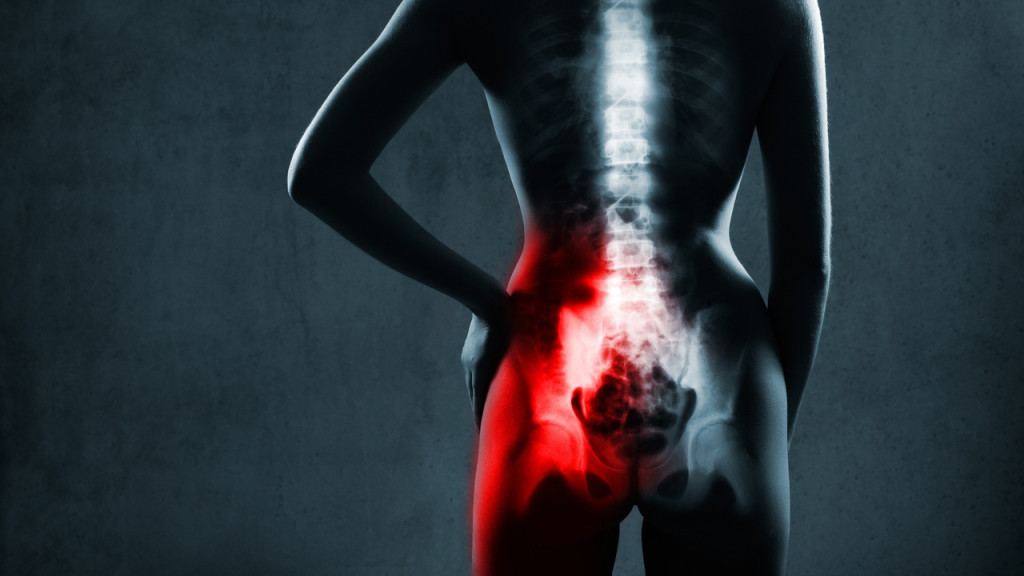Definition – Sacroiliac Joint Pain and Injections
The sacroiliac or SI joint connects the spine to the lower body by attaching the sacrum or tailbone to the pelvis. The sacroiliac joint (SI joint) can mimic pain coming from other sources such as a disc herniation, a pinched nerve (sciatica) or back arthritis.
Symptoms
Pain is usually located in the low back primarily below the belt line or in the buttock on one or both sides. Other symptoms may include leg pain, groin pain, difficulty standing from a sitting position and difficulty sitting or standing for prolonged periods.
Causes
The sacroiliac joint joint has been shown to become arthritic over time and arthritis seen on x-ray is very common. In one study 65% of asymptomatic patients showed arthritic or degenerative joint changes on x-ray. Another study showed that in 44% of patients with SI joint pain, trauma was the inciting event leading to pain. Additionally, the ligaments supporting the SI joint can become painful.
Diagnosis
As previously mentioned, imaging with x-ray of the SI joint alone is not enough for an accurate diagnosis. A thorough physical exam by your physician may also give important information. If the diagnosis is still unclear, a test can be done by precisely injecting numbing medicine (local anesthetic) into the SI joint.
Treatment for Sacroiliac Joint Pain
The initial treatment for most musculoskeletal pain disorders is conservative management with oral analgesic medications such as acetaminophen or ibuprofen, manipulation and physical therapy. If the pain persists despite these treatments, a diagnostic or therapeutic SI joint injection with corticosteroid and/or local anesthetic can be performed. This injection is done to confirm that the SI joint is the cause of the ongoing pain or pain generator. The procedure is done under x-ray guidance (fluoroscopy) to ensure that the medication is placed precisely in the right place. It can be completed in the office, does not need anesthesia, and is done quickly with minimal discomfort.
Ideally, if performed, the SI joint injection will give long-lasting relief of pain. However, even if the SI joint injection does not provide significant and lasting relief, it provides useful information regarding further testing and treatment.
If you believe you have SI joint pain or have other low back pain problems, we can help. Why suffer any longer? Contact us at 610-954-9400.
Related Articles
- Sacroiliac Joint Pain | Diagnosing & Treating
- Sacroiliac (SI) Joint Injections (Steroid)
- Intra-Articular Sacroiliac Joint Injections (SI)
- Lateral Branch Blocks
- Articles – Back Pain (Upper & Lower)
References
- https://www.spine.org/KnowYourBack/Conditions/LowBackPain/SIJointPain
- S. Cohen. Sacroiliac Joint Pain: A Comprehensive Review of Anatomy, Diagnosis, and Treatment. Anesth Analg 2005;101:1440–53


